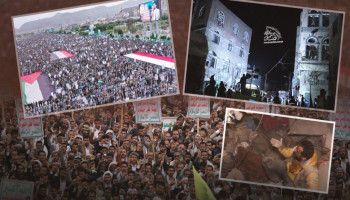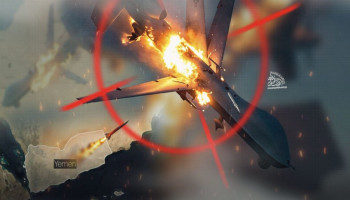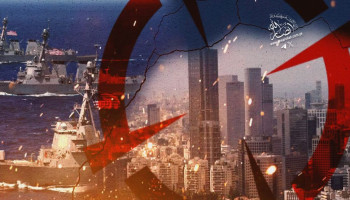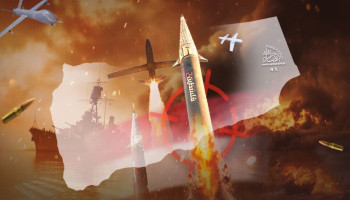Despite the continuation of the ceasefire since the 18th of last month, the Zionist entity continues to stall in negotiations for implementing the second phase of the agreement. This phase requires the release of the remaining male Zionist captives held by the resistance, the remaining Palestinian prisoners, and the full withdrawal of Israeli occupation forces from the Gaza Strip.
Negotiations for this phase were supposed to begin on the 16th day of the first phase, which lasts for 24 days. Now, 23 days have passed since the ceasefire began, with only two days remaining before this phase concludes. However, recent developments suggest that the ceasefire agreement has entered a difficult turning point that may threaten the entire deal.
Signs of Collapse in Negotiations
The sudden return of the Zionist delegation from Qatar—without providing any clear reasons—raises concerns over a deliberate escalation in the entity’s position regarding the ceasefire negotiations. The delegation was supposed to remain in Qatar to negotiate the second phase of the agreement.
The Israeli enemy has not only failed to comply with the first phase of the agreement but has also sought to impose unrealistic conditions for the second phase, including:
- The expulsion of Hamas leadership from Gaza.
- The dismantling of the Palestinian resistance's military wing.
- The immediate return of all Israeli captives in one exchange.
These conditions contradict the essence of any serious negotiations and reinforce Palestinian accusations that Netanyahu’s "government" is intentionally sabotaging the agreement to prolong military operations. This comes particularly after Netanyahu’s support for U.S. President Trump’s proposal regarding Gaza’s future as an "American investment project," a plan that has been strongly opposed by both Egypt and the Palestinians.
It appears that the Israeli entity is now attempting to achieve through diplomacy what it failed to achieve militarily. There is a consensus within the entity that it has lost the war against the Palestinian resistance. The extremist right-wing factions within the Zionist entity fear losing popular support due to this defeat. Therefore, they may be planning to resume their aggressive war or, at the very least, modify the agreement to impose new conditions that allow them to save face. However, the Palestinian resistance will not accept such terms.
The Entity’s Violations and Resistance’s Response
Several reports indicate that the Israeli entity has been violating the ceasefire agreement through continued aggressive actions. These violations include ongoing aerial surveillance flights over Gaza, delays in humanitarian aid deliveries—including fuel and tents—and a failure to withdraw forces from agreed-upon areas. Additionally, returning displaced civilians from southern to northern Gaza has been met with attacks, despite promises of safe passage.
While the Palestinian resistance initially exercised patience in response to these breaches for the sake of maintaining the prisoner exchange process, the entity’s continuous violations have crossed an unacceptable threshold.
In response, Al-Qassam Brigades—whose stance represents not only Hamas but also other national, leftist, and Islamic resistance factions—has announced a suspension of the release of the Zionist captives until "Israel" fully commits to the agreement’s terms. This marks a shift in the balance of power, as the resistance is now taking a firmer stance in imposing its conditions on the Israeli entity.
Unconditional U.S. Support for the Entity and Its Impact on the Agreement
The United States claims to be a mediator in the conflict, but in reality, it is fully aligned with the Zionist enemy. Trump’s recent statements regarding Gaza, including proposals to displace its residents and turn it into an economic project, have further emboldened the Zionist enemy's aggression.
Netanyahu’s recent visit to Washington and meeting with Trump revealed new hostile understandings between the two sides. It consists of providing the Israeli entity with unrestricted support in its aggressive operations in Gaza, reinforcing the belief that 'Tel Aviv' is not genuinely interested in a permanent ceasefire.
Netanyahu's statements describing this meeting as 'the most important in 20 years' indicate that:
-
A strategic agreement on Gaza’s future that disregards previous diplomatic understandings, including the Doha agreement.
- Unrestricted American support for further "Israeli" military operations.
- A shared goal between the U.S. and the Israeli entity is to prevent Hamas from remaining a political or military power in Gaza.
Possible Military Escalation
Zionist Criminal "War Minister" Yisrael Katz recently ordered the occupation army to increase its readiness for any potential scenario, signaling that the entity may be preparing for renewed aggression if negotiations remain stalled. Netanyahu had previously hinted before the ceasefire agreement that they would return to war whenever they wished, and with U.S. backing, this remains a strong possibility.
Other indicators of continued Israeli aggression include ongoing aerial violations over Gaza, despite the ceasefire, confirming that the Zionist enemy has not abandoned its strategy of maintaining military pressure on the Palestinian people. The enemy’s approach appears to be one in which it retrieves its captives through negotiations only to resume the war afterward. This calculation has been acknowledged by the Palestinian resistance, which has now suspended the prisoner exchange deal until further notice, pending the Israeli entity’s adherence to the signed agreement.
Possible Scenarios
Given the current developments and the increasing complexity of the situation, several possible scenarios may unfold:
- If the Israeli entity continues its violations and insists on imposing unrealistic conditions, Palestinian resistance forces may escalate militarily, launching new operations such as targeting Zionist settlements with rockets to force the entity back into negotiations under fairer terms.
- The conflict could expand beyond Gaza, potentially involving the West Bank or even Lebanon, as the entity has shown readiness for multi-front confrontations and has already conducted airstrikes on Lebanon in recent days, although the entity has shown militarily weak.
- International mediation efforts may intensify, with Egypt and Qatar playing a more assertive role, possibly leveraging security or economic cooperation to pressure the Israeli entity into respecting the agreement.
- Europe, which disagrees with Trump’s approach to the ceasefire, may also increase diplomatic pressure on the entity, particularly as criticism of Netanyahu’s "government" grows within Western political circles.
- The current situation between Yemen and Saudi Arabia would continue—where neither full-scale war nor a lasting peace is achieved. The fragile ceasefire may persist without leading to a permanent agreement.
- The Zionist enemy may continue conducting limited strikes on resistance positions while the Palestinian resistance maintains pressure by refusing to release captives and asserting its conditions in any future negotiations.
Overall, these scenarios reflect recent developments, yet the situation remains far more complex and could unfold in unforeseen directions.
Conclusion
All indications suggest that Israel is not interested in ensuring the success of the ceasefire agreement but is instead using it as a strategic tool to further its long-term agenda of aggression and control over Gaza. Meanwhile, the Palestinian resistance, led by Hamas and other factions, refuses to accept any deal that would result in the exile of its leadership or the disarmament of its forces.
With negotiations at an impasse, the likelihood of renewed Israeli aggression remains high—unless serious international pressure is applied to compel the Israeli entity to abide by the agreements it has signed.







